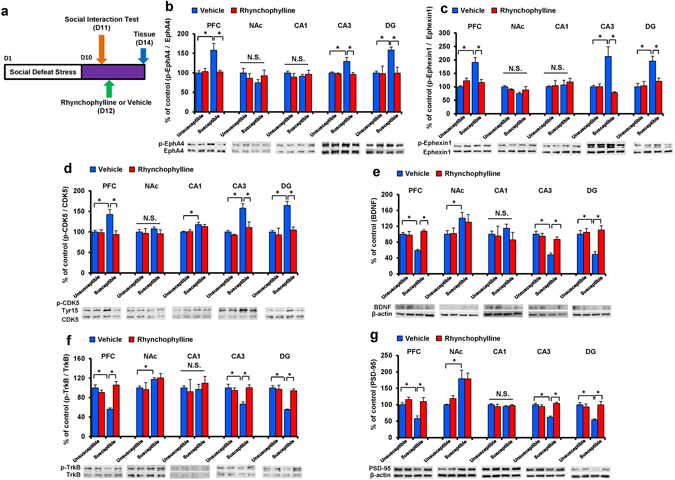Figure 4.

Role of EphA4-ephexin1-Cdk5 signaling, BDNF-TrkB signaling and synaptic protein in the antidepressant effect of rhynchophylline. (a) Schedule of social defeat stress (10 days), drug treatment, and brain sample collection. (b) Western blot analysis of EphA4 and p-EphA4 in the PFC, NAc, CA1, CA3, and DG of hippocampus. (c) Western blot analysis of ephexin1 and p-ephexin1 in the PFC, NAc, CA1, CA3, and DG of hippocampus. (d) Western blot analysis of p-Cdk5 (Tyr15)/Cdk5 in the PFC, NAc, CA1, CA3, and DG of hippocampus. The values are expressed as percentages relative to those in the control mice. The values represent the mean ± S.E.M. (n = 5 or 6). *P < 0.05 compared with the vehicle + stressed group. N.S.: not significant. (e): Western blot of BDNF in the PFC, NAc, CA1, CA3, and DG of hippocampus. (f): Western blot analysis of TrkB and p-TrkB in the PFC, NAc, CA1, CA3, and DG of hippocampus. (g): Western blot analysis of PSD-95 in the PFC, NAc, CA1, CA3, and DG of hippocampus. The values are expressed as percentages relative to those in the control mice. The values represent the mean ± S.E.M. (n = 5 or 6). *P < 0.05 compared with the vehicle + stressed group. N.S.: not significant.
